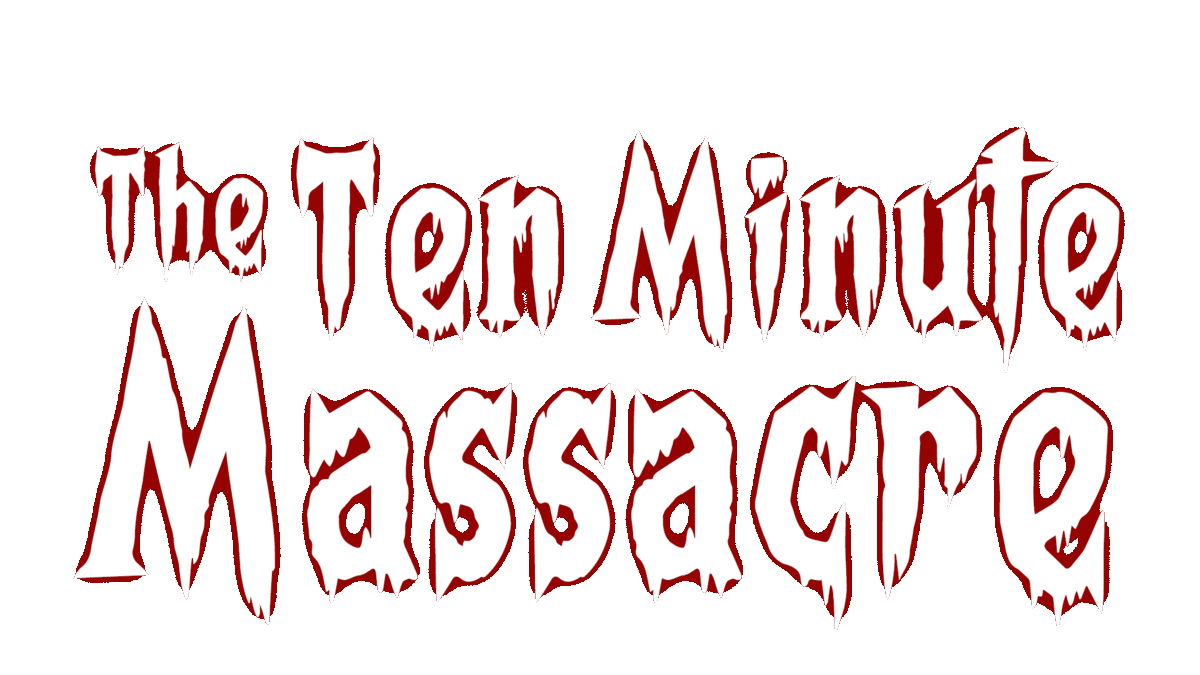The Bad Seed and The Hays Code
- Audrey E Lorber
- Dec 3, 2019
- 6 min read
The Hays Code was implemented by Hollywood to self-censor its films to prevent the government from doing so. This followed huge scandals centered around Hollywood stars and respective public calls and mass complaints for the government to make restrictions. With The Hays Code in place, many films were adapted to exclude violence and crime from being portrayed in a positive light or were extracted from being on-screen entirely. This affected the 1954 novel turned Broadway play turned psychological horror-thriller film The Bad Seed(LeRoy, 1956). The black and white film explores a mother’s uncovering of her eight-year-old serial killer daughter’s true nature and misdeeds. This plot contains the exact formula of a film that The Hays Code was sure to tear to threads and yet the story remains largely intact and reflective of the novel and play of the same name that came before it.
The Hays Code is “the informal name for The Motion Picture Production Code, adopted in 1930 but not seriously enforced until 1934. The Code was a set of rules governing American filmmaking that shaped- and in many ways stifled- American cinema for over three decades,” (1). Because this set of strict guidelines was led by prominent members of the Catholic community, it forced changes to films made until 1965 often based on restrictions to mocking religion, nudity, sex, and crime. However, The Hays Code also inspired filmmakers to find sneaky ways to include the restricted in their movies like simply discussing such taboos rather than depicting them onscreen.
The Bad Seed escaped The Hays Code relatively unscathed and remains a respected and stimulating film over 60 years after its original release. The setting in every version of The Bad Seed- the novel, play, screenplay, and film- for every scene except a small few is the Penmark’s home. This is pivotal as Rhoda, the eight-year-old daughter of Christine Penmark, commits no murders in the home itself. All acts of violence occur offscreen and are only discussed onscreen after the fact. The audience and the Penmark family learn about the death of a student at the annual Fern Country Day School from a television program interruption announcement.
The Hays Code’s impact and biggest change to the plot is evident mostly only in the final scenes of The Bad Seed. The film and screenplay features an alternate ending to the original story. In the novel and long-running stage play, Christine gave her sociopathic daughter enough sleeping pills to kill her under the guise of new vitamins. After Rhoda slips off to sleep, Christine shoots herself. However, Rhoda survives the overdose to live and kill another day as the sound of Christine’s suicidal gunshot alerts the neighbors. In the film version, Christine still drugs her daughter and, offscreen, shoots herself, but both survive (2). Christine awakens in the hospital, begging her husband for forgiveness to display her guilt over the attempted suicide and murder of her daughter, a key essential to a film following The Hays Code guidelines. Similarly, Rhoda dies in a karmic death by lightening strike after she goes to the lake to find the penmanship medal she killed a classmate over (2).
The Hays Code states that crime and immoral acts were never to be portrayed in a positive light. If characters in a film performed an immoral act, they must be punished onscreen. As in The Bad Seed, this part of the code resulted in numerous cases of adaptational karma in films. Adaptational karma refers to the change in the original fate of a character to a more fitting karmic punishment based on the crime committed (3). The Hays Code could not allow a sociopathic serial killer such as the likes of pigtailed Rhoda to escape the consequences of her murders. According to The Hays Code, crimes “shall never be presented in such a way as to throw sympathy with the crime as against law and justice or to inspire others with a desire for imitation” (4). If little Rhoda had continued to live, and the one person who knew the truth of her crimes, Christine, had not, in the film as they did in the book and play, the audience might perceive this as a justification for murder and not expect there to be consequences to crimes they might commit according to the Motion Pictures Production Code.
Lucky for us, The Hays Code stepped in. I do not consider the revised ending any less powerful than the original and actually do personally enjoy the added closure in the movie. However, the original ending in which it is implied that innocent Rhoda will continue to murder now that her mother is out of the picture is significantly more ominous, thought provoking, and realistic. Maybe it was too close to reality for the 1950s as people believed actress Patty McCormack, who played Rhoda in the stage play and later reprised the role in the film, possessed a similar murderous streak to the character she portrayed. “Fans of the show began stopping the girl in the street, asking her if she enjoyed murder in real life, or had ever beaten someone with her shoes” (5). So, while I can appreciate the original ending, maybe the creators of The Hays Code were onto something when they believed life would imitate art.
The Hays Code remained the guideline for films until The 1968 Rating System came into play. However, the industry implemented an age-based sort of system if they saw fit even before The Hays Code was abolished. “The Rating System’s supplanting the Code was no great leap. In fact, it was in the air for quite some time. The industry itself trotted it out occasionally. The Bad Seed’s (WB, 1956) ad campaign for its tale of an amoral child murderess bannered ‘recommended for adults only’” (6). Not only was the film advertised as one strictly for adults, but the Chicago police censor board took it into their own hands to ban all children from the viewings on the big screen (5).
There was a big worry that children audience members would relate to and in turn mimic Rhoda. This idea made The Bad Seedfall under the Code’s “Special Regulations on Crime” twelfth clause: “Pictures dealing with criminal activities, in which minors participate, or to which minors are related, shall not be approved if they incite demoralizing imitation on the part of youth,” (7). However, the film ultimately received the likely reluctant approval from the Production Code Administration after the rehauled ending to discourage juveniles from following in Rhoda’s footsteps and committing murders was written.
Evidently, the rewritten finale and clever advertisements were not enough to stifle the film’s risqué themes nor the only precautions taken to censor The Bad Seed. After the story concludes and “The End” appears onscreen, the actors are introduced and bow for a curtain call. While this may have been included to pay homage to the stage play, I believe it is likely that this ending was added to dispel the idea that the actress portraying Rhoda committed such heinous crimes in actuality as many fans of the Broadway run confusingly believed. Not only do the actors give a little bow, but the film fades out on actress Nancy Kelly, the actress that portrayed Christine, playfully spanking Patty McCormack on the set’s living room couch. To me, this feels like just the sort of thing 1950’s era movie filmmakers felt the need to implement to spell it all out for their audience.
So, The Hays Code had an effect on LeRoy’s The Bad Seed, but ultimately did not impact the movie so much that it is at all unrecognizable to its original novel or stage play. Instead, the violence contained is merely discussed and the only onscreen death is one of adaptational karma to rightfully condemn little Rhoda for her crimes. Efforts were also made to keep children from viewing the film and discourage them from juvenile delinquency if they did. I like the alterations made to the original ending and personally enjoy the theatrical curtain call. The story remains racy and fun because of its eight-year-old serial murderess plot and still serves to shock 2019 audience members with its peculiar, psychological twists.
Works Cited
(1) “The Hays Code / Useful Notes.” TV Tropes, tvtropes.org/pmwiki/pmwiki.php/UsefulNotes/TheHaysCode.
(2) Warner Bros. Pictures presents ; a Mervyn LeRoy production ; screenplay by John Lee Mahin ; directed by Mervyn LeRoy. The Bad Seed. Burbank, CA :Distributed by Warner Home Video Inc., 2004.
(3) “Adaptational Karma.” TV Tropes, tvtropes.org/pmwiki/pmwiki.php/Main/AdaptationalKarma.
(4) The Motion Picture Production Code, 1930
(5) Hunt, Kristin. “Hollywood Codebreakers: 'The Bad Seed' Introduces An Eight-Year-Old Serial Killer.” Medium, Medium, 10 Aug. 2018, medium.com/@kristinhunt/hollywood-codebreakers-the-bad-seed-introduces-an-eight-year-old-serial-killer-a38979365aaf.
(6) Casper, Drew. Hollywood Film, 1963-1976: Years of Revolution and Reaction. Wiley-Blackwell, 2011.
(7) Television and Juvenile Delinquency: Interim Report of the Subcommittee to Investigate Juvenile Delinquency to the Committee on the Judiciary Pursuant to S. Res. 190, 83d Congress, 2d Session, and S. Res. 62 and S. Res. 125 (84th Congress, 1st Session), a Part of the Investigation of Juvenile Delinquency in the United States. U.S. G.P.O., 1955.









